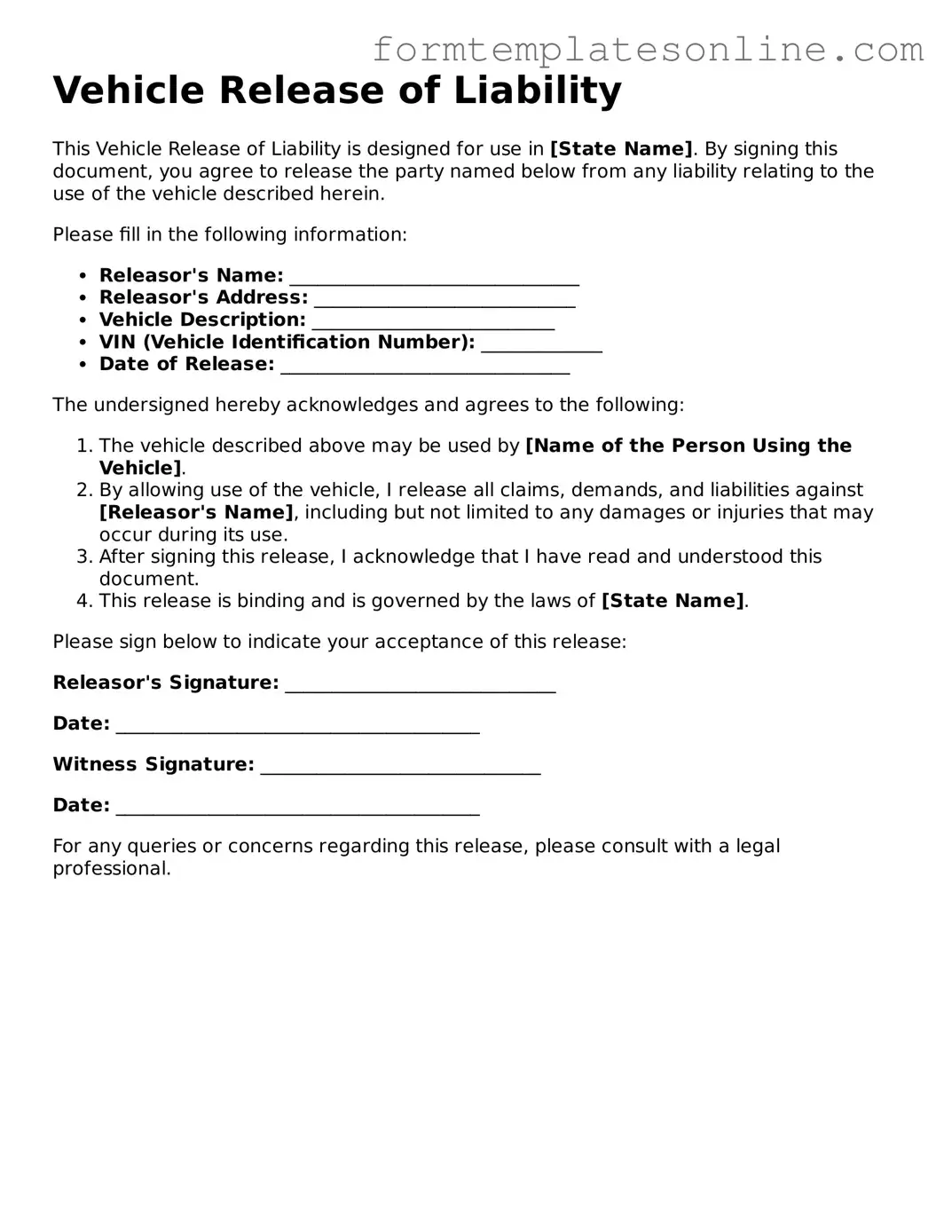Vehicle Release of Liability
This Vehicle Release of Liability is designed for use in [State Name]. By signing this document, you agree to release the party named below from any liability relating to the use of the vehicle described herein.
Please fill in the following information:
- Releasor's Name: _______________________________
- Releasor's Address: ____________________________
- Vehicle Description: __________________________
- VIN (Vehicle Identification Number): _____________
- Date of Release: _______________________________
The undersigned hereby acknowledges and agrees to the following:
- The vehicle described above may be used by [Name of the Person Using the Vehicle].
- By allowing use of the vehicle, I release all claims, demands, and liabilities against [Releasor's Name], including but not limited to any damages or injuries that may occur during its use.
- After signing this release, I acknowledge that I have read and understood this document.
- This release is binding and is governed by the laws of [State Name].
Please sign below to indicate your acceptance of this release:
Releasor's Signature: _____________________________
Date: _______________________________________
Witness Signature: ______________________________
Date: _______________________________________
For any queries or concerns regarding this release, please consult with a legal professional.
